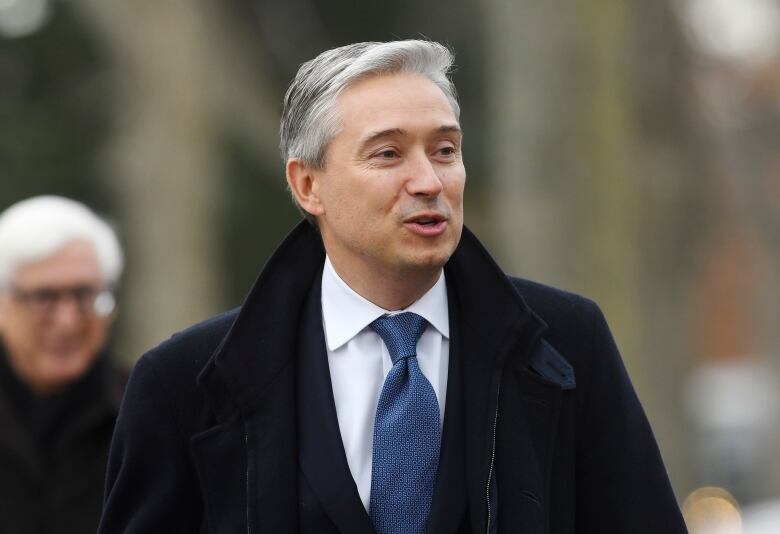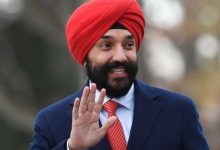7 new faces at cabinet table as Trudeau unveils his inner circle
Prime Minister Justin Trudeau unveiled his new cabinet today, bringing seven new faces to the table and tweaking the machinery of government to tackle western alienation and Liberal policy priorities such as fighting climate change, boosting the middle class and Indigenous reconciliation.
Chrystia Freeland was named deputy prime minister and minister of intergovernmental affairs, tasked with addressing mounting political frustration in Saskatchewan and Alberta. The former foreign affairs minister will now exercise her considerable diplomatic skills at home, working to build bridges with premiers who have been vocal opponents of the Trudeau government’s carbon price policy and lack of progress on building a new pipeline.
This is the first time Trudeau has named a deputy PM. The role comes with no formal duties but usually involves ceremonial functions — such as filling in for the prime minister during question period — and important policy roles.
Freeland is expected to play a leadership role across the cabinet, and to work directly with Trudeau and other ministers on key federal-provincial issues such as energy and environmental programs, health and infrastructure. She also will continue to oversee Canada-U.S. relations and to shepherd the trilateral trade deal with the U.S. and Mexico past the finish line.
Speaking to reporters after the two-hour swearing-in ceremony, Trudeau said he has worked closely in the past with Freeland on files that are vital to the country.
“Our ability to work together on these issues that, quite frankly, touch on national unity, touch on energy and the environment, touch relations with all provinces in all regions of this country, is going to be an extremely important thing at a time when we see some very different perspectives across the country that need to be brought together,” he said.
Freeland is just the tenth deputy PM in Canadian history. The last one was Anne McLellan under then-prime minister Paul Martin.
Jim Carr, who is receiving treatment for blood cancer, is stepping outside of cabinet to take on a new role as the prime minister’s special representative for the Prairies. He is said to be tasked with acting as Trudeau’s “eyes and ears” in the region, after the Liberals were shut out of Alberta and Saskatchewan in the recent federal election.
Two other people have been dropped from cabinet: Kirsty Duncan and Ginette Petitpas Taylor. Duncan has been named deputy House leader and Petitpas Taylor is the new deputy whip — roles which give them some responsibility for keeping the minority government’s agenda on track.
Others were promoted for what were seen as strong performances during the Trudeau government’s first term. Patty Hajdu will preside over the health portfolio as the government takes steps to bring in a national pharmacare program.

Bill Blair, who was in charge of border security and gun control, will take on the public safety ministry, a huge file that includes overseeing the RCMP, the Canada Border Services Agency, Corrections Canada and the Canadian Security Intelligence Service (CSIS).
Blair also will be tasked with delivering on campaign commitments to bring in more gun control measures, including a promise to ban assault-style rifles.

Trudeau is bringing new faces to significant roles. Marco Mendicino is the new immigration minister, Mona Fortier will be the minister in charge of the new portfolio of “middle class prosperity” and Marc Miller is taking on Indigenous services.
Two newly elected MPs also have been trusted with key cabinet posts: Anita Anand takes on the public service and procurement file and Steven Guilbeault is in charge of heritage.
Deb Schulte and Dan Vandal are joining cabinet as well — Schulte in the seniors portfolio and Vandal in northern affairs.
As reported earlier, François-Philippe Champagne is getting a promotion to foreign affairs.
On his way in to Rideau Hall, Champagne called it a “great day.”
“There are a lot of challenges and opportunities ahead for Canada, so I look forward to that new role,” he said.

Champagne takes on the post as Canada works to pass the trade deal with the U.S. and Mexico, and to secure the release of two Canadians detained in China.
Trudeau is keeping a trusted hand on the wheel in the crucial finance portfolio, keeping Bill Morneau as minister.
On his way into the ceremony, Morneau said he will continue to ensure the economy is strong for all Canadians.
“It’s very important for us to continue to improve conditions for Canadians across the country and we clearly want to deal with climate change, an issue that was talked about a lot in the campaign, and it’s an important issue for a lot of Canadians,” he said.
Of the 36 members of the new cabinet, 10 are from Quebec and 11 are from the Greater Toronto Area. Trudeau said that while he regrets that former Saskatchewan minister Ralph Goodale and former Alberta minister Amarjeet Sohi won’t be at the table to represent those provinces, the new cabinet will represent all Canadians.
Trudeau said his new team reflects the government’s priorities.
“I’m very excited today to be able to get down to work the way Canadians asked us to in this last election — to pull together the country, to focus on issues of economic growth for the middle class, to fight climate change and to keep Canadians and their communities safe,” he said.
“That is our focus and this is the team to do that.”
The other people swapping ministries are:
- Ahmed Hussen, going to families, children and social development.
- Mélanie Joly, to economic development and official languages, in charge of regional development agencies.
- Bernadette Jordan, to fisheries and oceans.
- Catherine McKenna, to infrastructure and communities.
- Dominic LeBlanc, now president of the Queen’s privy council, chair of the operations committee.
- Joyce Murray, to digital government.
- Mary Ng, to small business export promotion and international trade .
- Carla Qualtrough, to employment, workforce development and disability inclusion.
- Jonathan Wilkinson, to environment.
- Filomena Tassi, to labour.
And the ministers who are staying put include:
- Navdeep Bains, innovation, science and industry
- Carolyn Bennett, Crown-Indigenous relations
- Marie-Claude Bibeau, agriculture
- Marc Garneau, transport
- David Lametti, justice
- Diane Lebouthillier, national revenue
- Lawrence MacAulay, veterans affairs
- Maryam Monsef, women and gender equality, plus rural economic development
- Harjit Sajjan, defence
Mark Holland will remain in the non-cabinet role of chief government whip, while Kevin Lamoureux will serve as parliamentary secretary to the House leader.
Conservative Leader Andrew Scheer issued a statement soon after the new cabinet was announced, describing the new team as representing a lost opportunity for Trudeau to abandon his “reckless approach” to government.
“The cabinet he unveiled today is a bigger and more bloated version of the same one that helped create an affordability crisis for Canadian families, attacked our energy sector and put thousands of Canadians out of work, and set the stage for a national unity crisis,” he said in a statement.
“Justin Trudeau has made it clear that he has learned nothing over the last four years. By appointing a known anti-pipeline activist and ministers who stood behind him while he passed job-killing, anti-energy legislation like Bills C-69 and C-48, Trudeau will only further stoke the divisions he created during the election campaign.”
Trudeau’s first cabinet had 31 ministers, including himself. By the time Parliament was dissolved for this year’s election, it had grown to 35 ministers.
All of Trudeau’s ministers were re-elected in October except for Ralph Goodale and Amarjeet Sohi, who both lost their seats.
CBC








Redes Sociais - Comentários